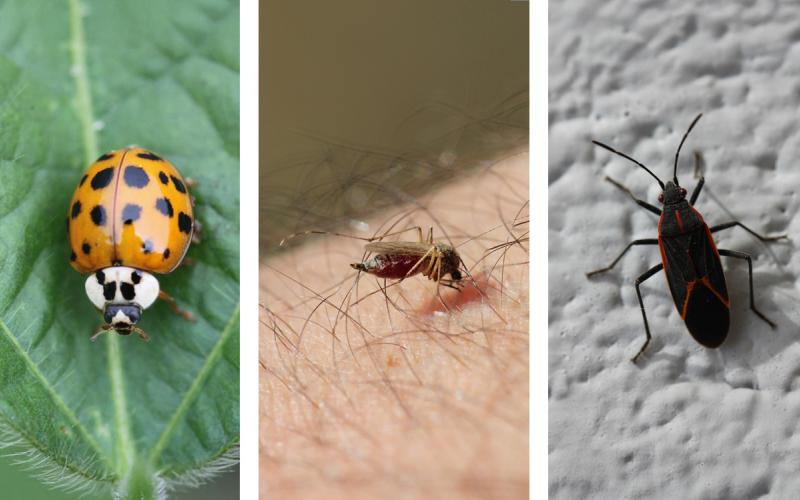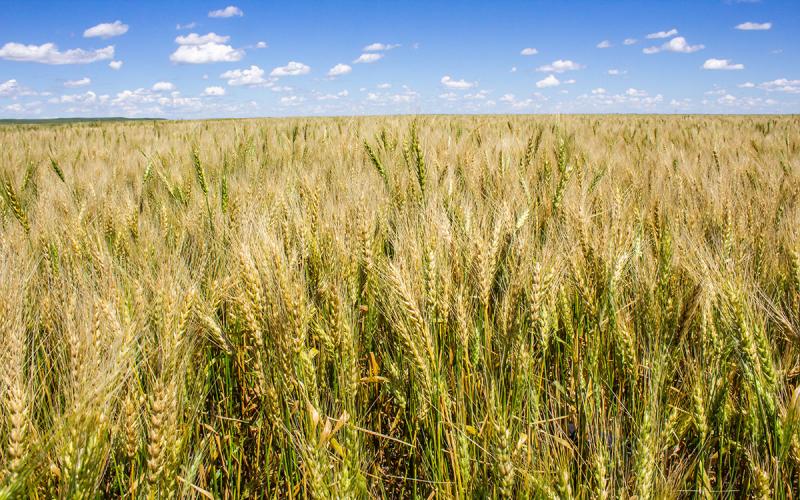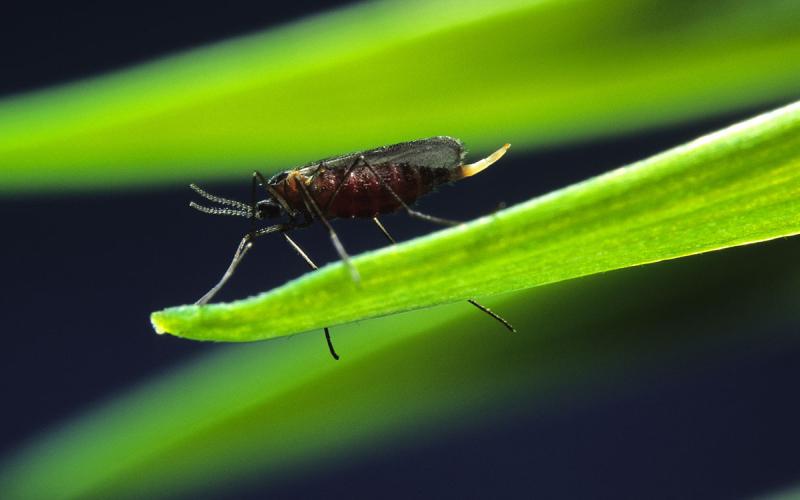Written collaboratively by Adam Varenhorst, Philip Rozeboom, Amanda Bachmann, Patrick Wagner, Brad McManus.
During 2025, large grasshopper populations have been observed in many areas of South Dakota. These populations have required management in other crops and will probably be an issue for winter wheat when it begins to emerge.
Common Species
The most common grasshopper, pest species in South Dakota include the twostriped grasshoppers (Figure 1), differential grasshopper (Figure 2), and the redlegged grasshopper (Figure 3). Because many crop and non-crop hosts are starting to naturally dry down during this time of the season, grasshopper populations will be actively seeking alternative food options including winter wheat seedlings.
Two-Striped
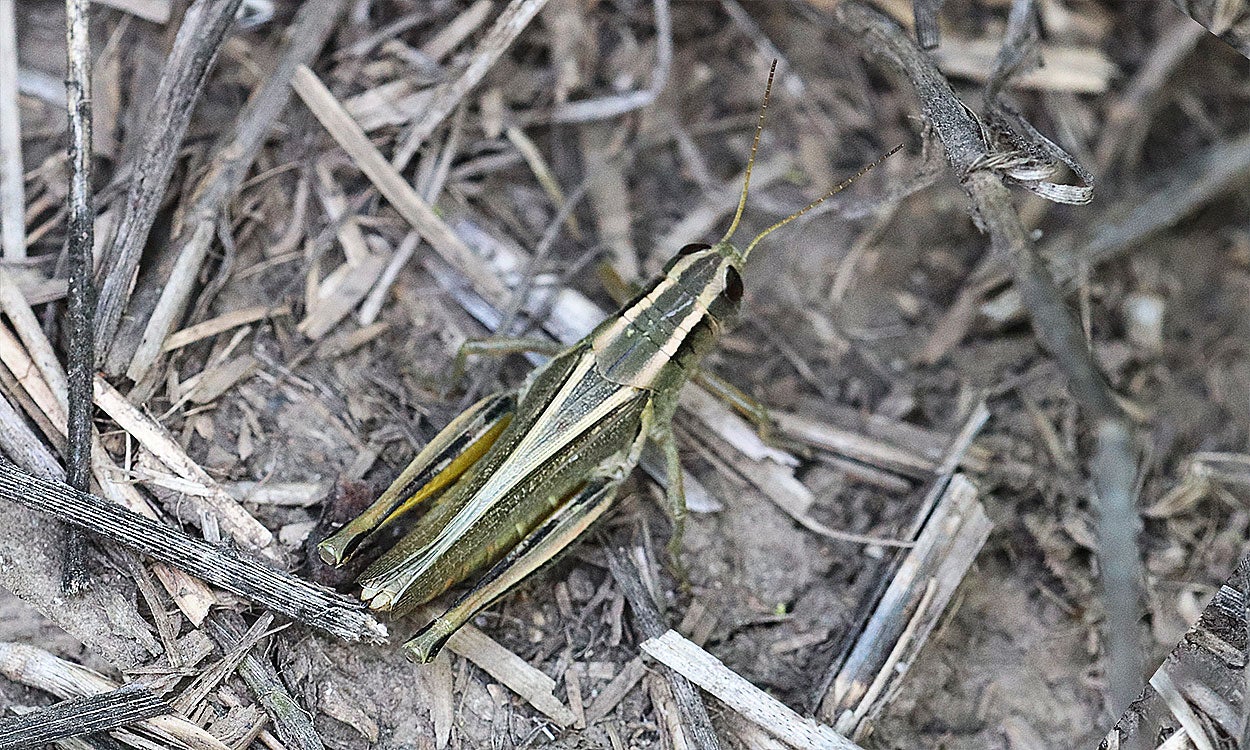
Differential
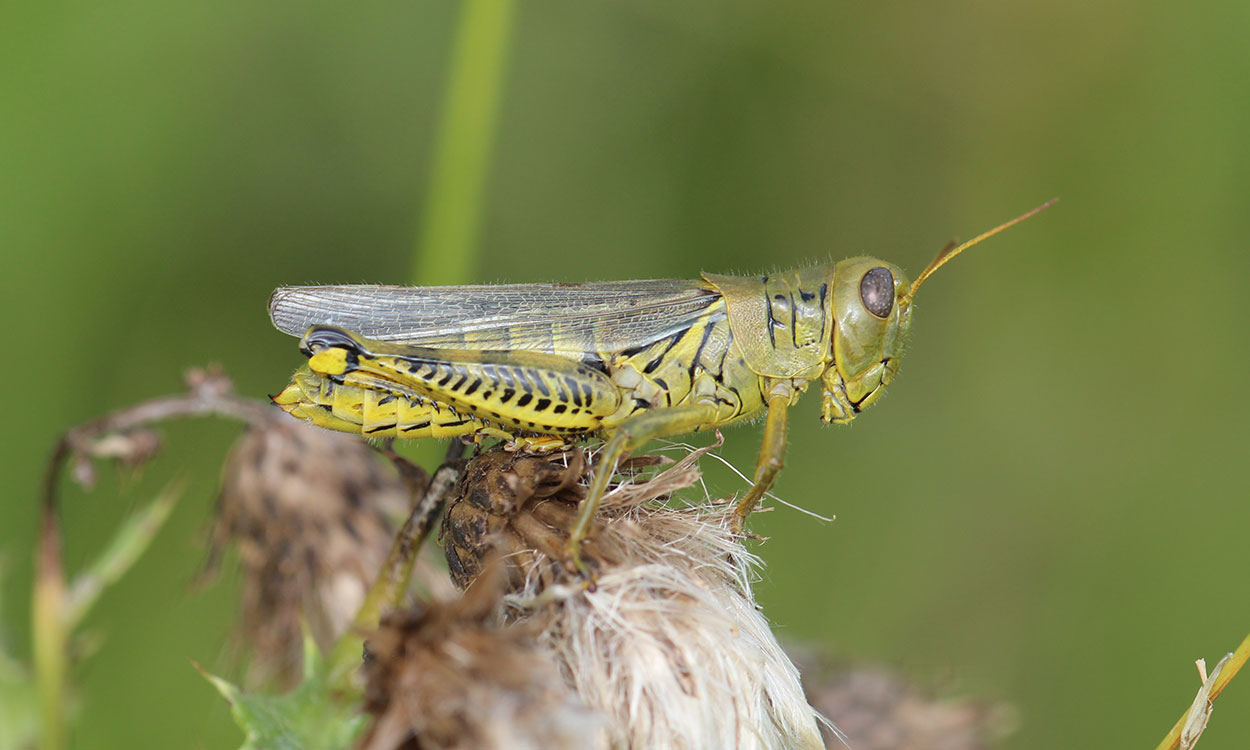
Redlegged

Scouting and Management
It is important to scout emerging winter wheat fields before and after planting for grasshopper numbers and feeding injury, especially in areas where large grasshopper populations are being observed. Grasshoppers can cause stand loss by clipping back the emerging plants. This type of injury will be more noticeable along the field margins, as grasshoppers reside in the nearby vegetation.
Prior to Planting
Before planting, scout the vegetation around the field edges and count the number of grasshoppers that are present in approximately one square yard. Management should be considered if 11-20 grasshoppers per square yard are present in the non-crop borders. Here are a few management options to consider:
- Delay planting in areas where grasshopper populations are high to reduce the time that grasshoppers will be feeding on the emerging wheat.
- When there are increased grasshopper population densities in areas surrounding the field, double the planting population for a strip that is between 60-120 feet wide around the field edge. As grasshoppers move into the field, they will feed on the emerging wheat. However, the increased plant stands around the edge will slow the movement of the grasshoppers into the rest of the field. The increased plant stand will compensate for the lost seedlings and allow for a reasonable stand to exist after grasshoppers have finished foraging for the year.
- Insecticide seed treatments are labeled for grasshopper management in winter wheat and can provide protection during emergence. For grasshoppers, treated seed can be planted to the field edges in a strip that is 60-120 feet wide, or it can be planted to the entire field. For effective management of grasshoppers, the highest registered rate of the product should be applied to the seed. Please refer to the most-recent South Dakota Pest Management Guide: Wheat for insecticide seed treatment options and recommended rates.
- Foliar insecticide sprays may be applied to the non-crop field edges to prevent the grasshoppers from moving into the wheat fields. Before selecting an insecticide, check the label to ensure that it can be sprayed on non-crop areas. See Table 1 for a list of non-crop and pasture insecticide options.
| Insecticide | Rate2, 3 (for grasshoppers) | Restricted Entry Level (hours) |
|---|---|---|
| Non-Cropland4 | ||
| Asana XL (esfenvalerate) | 2.9 to 4.8 fluid oz. per acre | 12 |
| Karate Insecticide with Zeon2 Technology (lambda-cyhalothrin) | 1.28 to 1.92 fluid oz. per acre | 24 |
| Warrior II with Zeon Technology2 (lambda-cyhalothrin) | 1.28 to 1.92 fluid oz. per acre | 24 |
1 This list is not meant to be comprehensive. Always read and follow label directions.
2 Label rates for non-cropland are based on those of adjacent crop.
3 Adult grasshoppers will require higher rates than nymphs (immatures).
4 Do not graze livestock on treated areas.
After Planting
If grasshopper populations are causing severe defoliation or clipping in newly emerged winter wheat, it is important to determine if the populations are at or above 11-20 grasshoppers per square yard. Additionally, determine how far into the field the grasshopper populations are. Here are some management options to consider for emerging wheat:
When injury and grasshoppers are only present around the field edge, a foliar application of insecticide to that area may be sufficient for reducing grasshopper feeding pressure. It is important to remember that there will be little residual activity of foliar insecticides due to the limited leaf area of emerging wheat. Please refer to the most-recent South Dakota Pest Management Guide: Wheat for a list of foliar insecticides that may be applied to wheat.
If injury to the field edge is severe due to heavy grasshopper feeding pressure, it is possible to replant those areas after the first hard frost occurs. Temperatures at or below 28 ℉ will reduce grasshopper populations.
